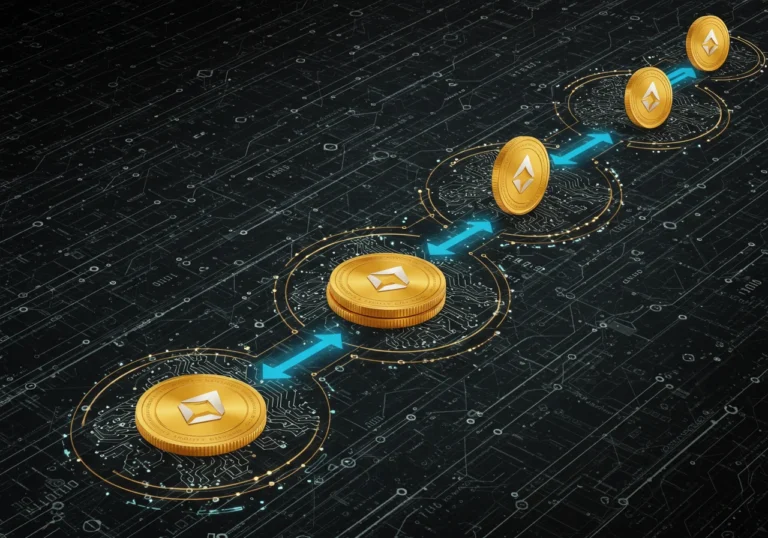DeFi Arbitrage: Lending vs. Borrowing Protocols — A Deep Dive into Opportunities
DeFi Arbitrage can sound heavy. But it is mostly about finding small differences and using them. That idea is easy to understand. It is like buying oranges at one market and selling them at another when the price is higher. In DeFi, those “markets” are protocols and pools. The goal here is to explain how lending and borrowing protocols work and how people use price and rate differences to try to make profit safely.
What is DeFi Arbitrage and why people care

DeFi Arbitrage means using differences in prices or rates between two or more places on blockchains to earn a small profit. These differences can be in token prices, interest rates, or swap fees. People who do arbitrage look for moments where the math favors them.
Arbitrage can help networks become more efficient. When someone spots a price gap, they act. Their action pushes prices closer together. That makes markets fairer over time. But arbitrage also has risks. You might lose money if transactions fail or fees rise.
A simple example
Imagine two lending platforms. Both let people borrow and lend USDC. On Platform A, lending pays 5% yearly. On Platform B, borrowing costs 3% yearly. Someone could borrow USDC on B, lend on A, and keep the 2% difference. That is basic arbitrage with lending and borrowing.
Now picture another case. A token trades for $1.00 on one exchange and $1.05 on another. A trader can buy on the cheap exchange and sell on the expensive one. The profit is the gap minus fees and risk.
Lending protocols vs. borrowing protocols — what’s the difference?
Lending protocols let people deposit tokens to earn interest. Borrowing protocols let people take loans by giving collateral. In many DeFi systems, a single protocol does both. But it helps to think of them separately.
How lending protocols work
When you lend crypto, you lock it into a smart contract. The protocol uses that money to let others borrow. Lenders earn interest. The rate depends on supply and demand. If many people lend, rates fall. If many people borrow, rates rise.
Lending platforms often show a simple number: the annual percentage yield (APY). That is the interest you might earn in a year, not counting fees or changing rates.
How borrowing protocols work
To borrow, you usually need to put up collateral. If the loan becomes risky, the protocol can sell your collateral. This keeps the platform safe. Borrowers pay interest and sometimes fees.
Borrowing can be useful. People borrow to trade, to leverage positions, or to get cash without selling their assets.
How arbitrage happens between lending and borrowing
Arbitrage involving lending and borrowing often uses rate differences. Here are common patterns.
Rate arbitrage (interest rate differences)
Suppose Protocol X lends DAI at 6% and Protocol Y allows borrowing DAI at 3%. A trader might borrow at 3% and lend at 6%, pocketing the 3% spread. But this is only easy in theory. In practice, many things can go wrong, and rates can change quickly.
Collateral arbitrage
Some users borrow stablecoins using volatile assets as collateral. If one platform values collateral more favorably, an arbitrage opportunity may appear. For example, you could borrow on Platform A and deposit into Platform B where lending yields are higher.
Flash loans and instant arbitrage
Flash loans let users borrow large amounts without collateral, as long as the loan is repaid within a single blockchain transaction. People use flash loans to grab price differences across exchanges, execute trades, and repay the loan — all in one go. Flash loans can make arbitrage possible even when the trader has little capital. But they require precise, fast execution and technical skill.
Why lending vs. borrowing arbitrage is not risk-free

Short answer: fees, slippage, liquidation, and smart contract risks.
Fees and gas
Every blockchain action costs fees. On some chains, fees are low. On others, like Ethereum during busy times, fees can be high. These fees can eat into or wipe out arbitrage profits.
Slippage and price movement
When you trade, the price can move as you buy or sell. If you try to trade a lot in a small market, your own trade changes the price. That reduces profits. People often split trades or use many venues to minimize slippage.
Liquidation risk
If you borrow using volatile assets as collateral, sudden price drops can trigger liquidation. That means your collateral is sold at unfavorable prices. Liquidation fees and losses can erase arbitrage gains.
Smart contract risk
Protocols are code. If the code has bugs, funds can be lost. Audits help but do not remove all risk. Using well-audited, established platforms reduces risk but does not eliminate it.
Tools and strategies for safer arbitrage
You do not need to be a wizard to understand useful strategies. Here are practical steps and tools that help.
Start small and test
Begin with small amounts. Try to make a single pathway work on a testnet or with tiny funds. This helps you learn how gas, failures, and times affect results.
Use analytics and screeners
There are tools that monitor rates across platforms. They show where lending yields, borrowing rates, and token prices differ. Use those tools to spot opportunities without watching dozens of sites yourself.
Automate carefully
Automation can help you act faster than manual trades. But automation introduces new risk. When you automate, monitor logs and set limits. Make sure your bot can handle failed transactions without losing everything.
Consider time horizons
Some arbitrage is instant (flash loans). Other arbitrage involves keeping positions open for days or weeks. Each approach has different risks. Choose one that matches your comfort and capital.
Spread risk across platforms
Do not put all your money in one protocol. If the contract fails or a platform is hacked, spreading funds reduces total loss.
Real-world example — a step-by-step story
Let me tell a short, simple story to make this real.
Sofia noticed that Protocol A paid 7% on lending USDT. Protocol B let users borrow USDT at 4%. Sofia had some capital but not much. She borrowed on B at 4% and transferred the USDT to lend on A for 7%. The difference looked like 3%.
She double-checked fees. The transfer cost a small fee. She set a stop plan in case rates moved. For two months, she kept the position. The spread narrowed as others acted. She earned a small profit, minus fees.
This shows the idea. It is not magic. It is careful math, watching, and managing risk.
When arbitrage stops working
Arbitrage relies on inefficiencies. Markets can get efficient fast. When many people chase the same gap, the gap disappears. Also, protocols change rules, or new fees appear. Always expect opportunities to be temporary.
Ethics and market impact
Arbitrage can help markets. It brings prices closer across platforms and increases liquidity. But some practices — like front-running or harmful market manipulation — are unethical or illegal. Aim for fair play.
Checklist before attempting a DeFi Arbitrage
- Have you calculated fees and gas?
- Do you understand liquidation triggers?
- Is the protocol audited and trusted?
- Can you automate safely or act fast manually?
- Do you have a clear exit strategy?
Conclusion — is DeFi arbitrage for you?
DeFi Arbitrage can be a real way to earn money. It is not a get-rich-quick trick. It needs care. It needs math. It needs discipline. If you are thoughtful, start small, and respect risks, arbitrage can be part of a smart strategy. If you prefer to avoid the technical side, safer alternatives include using established lenders, staking, or passive strategies.
Be kind to yourself. Take time to learn. Try a little. Learn from mistakes. Over time, the small wins add up and teach you more than any sudden big bet.
Key takeaways
- DeFi Arbitrage is about exploiting small price or rate differences between platforms.
- Lending protocols let you earn interest by depositing assets.
- Borrowing protocols let you take loans with collateral and pay interest.
- Common arbitrage types: rate arbitrage, collateral arbitrage, and flash loan arbitrage.
- Main risks: fees, slippage, liquidation, and smart contract bugs.
- Use tools, testnets, and conservative capital to practice safely.
- Arbitrage helps markets become more efficient, but it must be done ethically.
FAQ
Q: Do I need coding skills to do DeFi arbitrage?
A: Not always. You can start manually or use simple tools. For flash loans or fast multi-step arbitrage, coding helps a lot.
Q: How much money do I need to start?
A: Start with amounts you can afford to lose. Some arbitrage needs little capital, but fees and gas can eat small profits.
Q: Are flash loans safe?
A: Flash loans are powerful but risky. They require exact execution. If the transaction fails, you usually pay only fees, but complex setups can compound losses.
Q: Which blockchains are best for arbitrage?
A: Blockchains with low fees and many liquidity pools are attractive. But every chain has trade-offs. Research and compare.
Q: Can arbitrage be automated?
A: Yes. Many traders automate. Automation reduces reaction time but introduces new risks. Test bots carefully.
Q: Will arbitrage disappear as markets grow?
A: Some opportunities vanish as markets mature. But new inefficiencies appear with growth and new protocols.

Hello, I’m Edmilson Dias, founder of CoinBringer. I created this platform to guide people through the fast-moving world of cryptocurrency with clarity and safety. With years of research in blockchain and digital security, my goal is to translate complex topics into practical knowledge, offering reliable tutorials, safety insights, and guidance for both newcomers and experienced users.
Discover more from CoinBringer
Subscribe to get the latest posts sent to your email.







